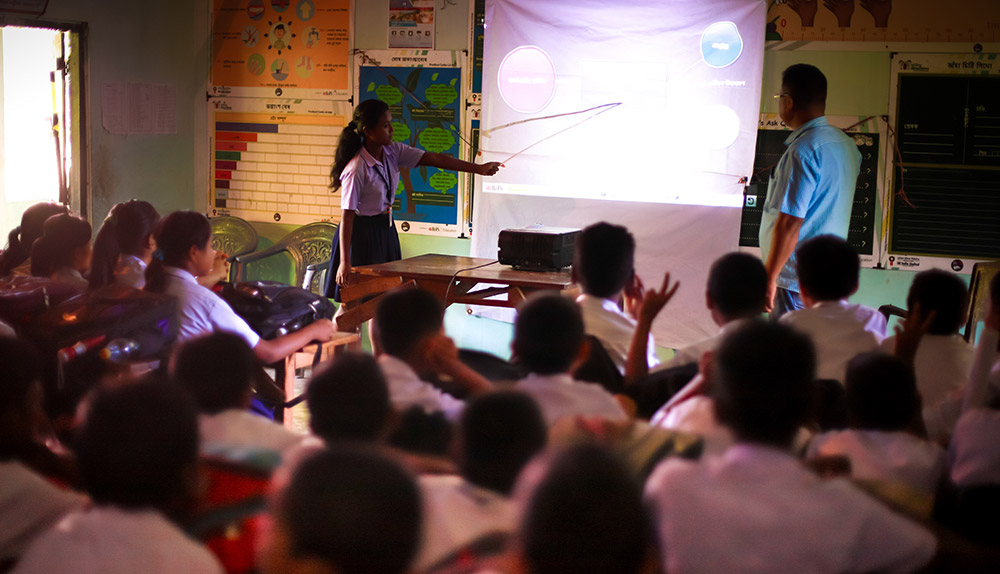Blogs
Evaluating the Performance Grading Index: Digital Infrastructure and Education in a Post-Pandemic India

The pandemic threw a spanner in the works of a slowly improving Indian education system. It also exacerbated the digital divide as millions of students in the middle and the bottom of the pyramid were left in the lurch while others shifted to online learning easily. With digital infrastructure becoming a necessity, there must be a concerted effort to gather data on the status of the digitalization of schools. Recently, the Ministry of Education released the Performance Grading Index (PGI) which assigns scores to states/UTs based on infrastructure, equity, learning outcomes, access, and governance processes. We believe that going forward, as technology plays a more central role in our lives, the PGI must include wider metrics for assessing the status and role of digital infrastructure in providing quality education. This will help in creating evidence-based policy decisions and a set of best practices for states to rely upon.
In 2019-20 (the pre-COVID year), 33 states and UTs improved their scores in the PGI. The top five states/UTs (Andaman and Nicobar Islands, Punjab, Tamil Nadu, Kerala, and Chandigarh) were classified into Level II, however, the 31 States in Level III or lower still have a long way to go. The Education Ministry has avoided ranking states to eliminate "the stigma of underperformance", but instead has grouped them into performance levels. This is meant to create a community of best practices through a resource-sharing tool for states to learn from one another. In this vein, the report identifies two domains as weak links - governance processes and infrastructure. Governance parameters including shortages of teachers, principals and staff, poor supervision and inspection, and inadequate training of teachers will improve with greater political will and local administrative agencies taking ownership of the learning crisis.
As a subset of infrastructure, digital infrastructure has acquired urgent importance. With COVID-19 worsening the already woeful state of education, ICT-enabled tools will become key strategies for remediation of learning loss and improving PGI scores. The states in Level II performed well on ICT-related sub-domains, but 28 states scored less than 80% of the maximum score on having Computer-Aided Learning in upper primary schools, and 18 states scored similarly on having computer labs in secondary schools – the only two ways in which the PGI measures digital infrastructure. States like Uttar Pradesh, Bihar, Chhattisgarh, and Jharkhand scored as poorly as 2 on 20 in this domain. Inside the classroom, digital infrastructure provides modern and user-friendly tools for the teacher to effectively engage the students, enable deeper conceptual understanding and retention, and improve learning outcomes. This requires a focus on digital pedagogy as a function of teachers’ professional development. While the PGI does account for the sanctioned number of days of training, it misses out on assessing the value of the training provided, including in digital pedagogy. The COVID-19 crisis showed the extent to which teachers were left untrained in this domain, leading to students’ learning suffering.
Punjab converted 67.2% of its government-run schools into smart schools and saw heartening results from students and teachers. This resulted in Punjab climbing to the top of PGI in 2019-20 from the 13th position in 2017-18. At the other corner of the country, Kerala became the first state to have completely digital hi-tech classrooms in all public schools. Outside the classroom, both states launched programs on Zoom/Whatsapp to prevent learning disruptions during the lockdowns. Thus, building the capacity of schools has a cascading effect in not only improving PGI scores, but in augmenting the entire ecosystem of teaching, learning, and learning outcomes. As the report mentions, these are critical inputs for student performance and provision of quality education as per international standards.
It is no revelation that India suffers from vast learning poverty. The World Bank estimates that a staggering 54% of India's children are below minimum proficiency in reading. Almost 20% of Indian school students drop out due to a lack of interest in studies, a problem that technologies like personalized learning can ameliorate. But challenges in online learning need to be tackled too – while some students lack reliable internet, others struggle to participate in online learning due to an unstructured environment. The government thus needs to increase the pace of digitalization of the country so that students do not face gaps in their learning paths in an increasingly unpredictable world. Of the total 1.5 million schools in India, only 19% have internet facilities and 33% have computers. ‘Blended learning’ has already become part of our lexicon, and thus the infrastructure to support it needs to start playing catch-up.
Although the uptake of online education during the pandemic was hasty, it has propelled a directional change in education globally. Many argue that this moment will serve as an inflexion point for EdTech. Therefore, in the PGI, the Ministry of Education should expand the definition of and incorporate with appropriate weightage, various indicators to measure digital infrastructure in school education – not only for its role in improving the quality of education and informing government policy but also for the index’s continued relevance.





